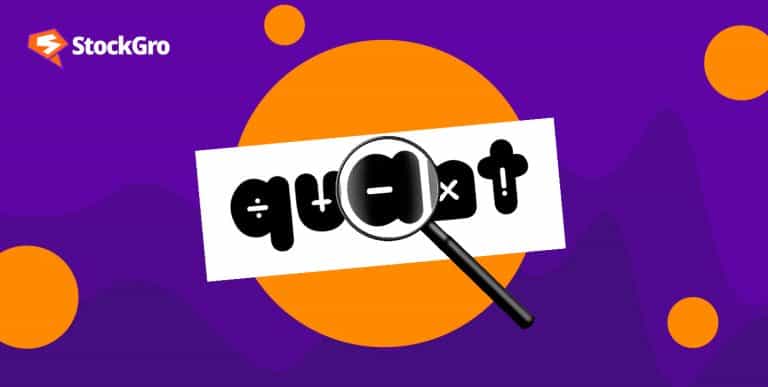
Investors usually are very hesitant to invest in shares during the initial years of the company. But they also experience the FOMO (Fear Of Missing Out) in the later years when those shares are soaring high in the stock market. Let us explore this unique instrument which gives the double advantage of debt and equity.
What are Partially Convertible Debentures?
There are two main types of convertible debentures namely – Fully convertible debentures and Partially convertible debentures. Among these two types of debentures, partially convertible debentures (PCD) are more desired by investors for its dual benefit..
Partially convertible debentures (PCD) are instruments with a hybrid nature of debt and equity. After a prescribed period, the debt instrument can be converted into equity shares by the investors. The ratio for this conversion is decided by the company.
Let us simplify it with the help of this hypothetical example:
Ms. Roma invests in a company named ABC ltd through 100 PCDs worth Rs.150 each. So the value of this investment is Rs.15,000. These PCDs are 30% convertible into shares after four years. These shares would be worth Rs.120 each.
So, after four years, Ms. Roma can convert Rs.4500 worth of debentures into equity shares if the market price of the shares of ABC ltd is more than Rs.120.
The rest of Rs.10,500 will be paid back as a bond and can provide stable interest income till maturity. This conversion is at the discretion of the investor (Ms. Roma) and so this instrument is also known as optionally partially convertible shares.
Also read: What are bonds and debentures? How are they different from each other?
How do these types of debentures differ?
There are several classifications of debentures. Based on conversion, following distinction can be made between the types of these instruments:
| Point of Difference | Non-Convertible Debentures | Fully Convertible Debentures | Partially Convertible Debentures |
| Convertibility | Cannot ever be converted | Convert fully into equity shares | Convert partially into equity shares (as per ratio by the issuer) |
| Level of Risk | Less Risk: Debt instruments with fixed maturity, confirm payment | More risk: Compulsory conversion, stock market volatility | Moderate to less risk: Benefit of debt and equity eventually balancing the risk. |
| Maturity Value | Fixed maturity by coupon rate | Depends on stock price of the company | Bond fixed maturity andequity share return |
| Liquidity | Very less liquidity due to fixed maturity period | High liquidity as easy sell in the stock market | Partial liquid; part of funds fixed till maturity |
Read this: Non-Convertible Debentures decoded: Steady returns, zero complications
Features of Partially Convertible Debentures
- Conversion method – the PCDs can be converted into equity shares of the company after the prescribed period by the issuer. Also, this conversion is done as per the prescribed ratio by the issuer.
- Flexibility – Investors have the option of using their privilege of conversion or not after the period mentioned. This helps them access benefits of both; the growing returns with good equity markets or the fund security during bad equity markets.
- Strategic significance – Companies usually issue PCDs when they have specific needs for the capital structure of the company. Also, this instils confidence in potential shareholders and raises funds as per the capital requirement of the company.
- Balanced Risk profile – Investors enjoy a balanced risk spread after the conversion as the equity and bond markets are usually in inversely moving trends.
- Regulatory Measures – SEBI regulates PCDs like all other instruments. The strict guidelines and technicalities regarding conversion ratios, period, etc are mandatory for disclosure.
- Investor’s choice – The debt and equity moat is the most desired and unique feature of this instrument by the investors.
For more information: Understanding convertible debentures
Advantages and Disadvantages of partially convertible debentures
| Advantages | Disadvantages |
| Benefit of Equity and Debt Returns. | The complex structure is thus partially convertible debentures in India are not that famous. |
| Optional discretion safeguards from volatile or shabby equity markets. | Lower interest rate than other debt instruments. |
| Preference during liquidation, due to partial creditor status. | Bond portion of debenture still faces interest rate risk. |
| Diversification of risk during crunch situations. | Risk of losing money in an equity market after the conversion. |
Conclusion
There are always two sides to a coin and not both can be chosen. Similarly this unique investment instrument has its own set of pros and cons but is a hidden gem in a country like India. Partially convertible debentures (PCDs) provide its investors the thrill of uproaring equity markets as well as the stability and protection in the debt instrument like bond.
FAQ
Q1. What are two types of convertible debentures?
There are always two sides to a coin and both sides can never be chosen. Similarly, this unique investment instrument has its own “combination of” pros and cons but is a hidden gem in a country like India. Partially convertible debentures (PCDs) provide investors the thrill of uproaring equity markets as well as the stability and protection in debt instruments like bonds.
Q2. What is the difference between partially convertible debentures and fully convertible debentures?
The major point of difference between partially convertible debentures and fully convertible debentures is the portion of the total debt investment that gets converted into equity shares and the discretion of investors. The fully convertible are all compulsorily converted after a specific time; On the other hand partly convertible are converted to equity shares in a partly specified ratio as per the investor’s choice.
Q3. What is an OFCD Debenture?
The Optionally Fully Convertible Debentures are a unique and novel instrument that provides options for fully convertible debentures to get converted into equity shares or not. The benefit of full equity ownership and the risk of a total loss of security for the funds makes this instrument unique.
Q4. Can a company issue partly and fully convertible debentures?
A company that is well established in the market can opt for raising funds through partially convertible debentures. While a company that is yet in its early stage, usually opts for raising funds through fully convertible debentures.
Q5. What are partially convertible debentures?
The particular debenture-type debt instruments that provide an option for partial conversion into equity shares after a certain number of years are known as partially convertible debentures. They provide benefits of both- debt as well as equity.

